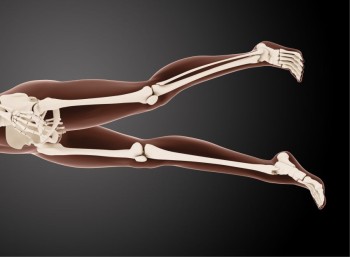
Distal Cologram X-ray is a specialized diagnostic imaging technique crucial for examining the distal colon, providing valuable insights into colorectal conditions and abnormalities within the gastrointestinal tract.
Distal Cologram X-ray with Cost
Distal Cologram X-ray in Detail
Introduction
Distal Cologram X-ray is a specialized diagnostic imaging technique crucial for examining the distal colon, providing valuable insights into colorectal conditions and abnormalities within the gastrointestinal tract.
History of Distal
Cologram X-ray
The evolution of Distal Cologram X-ray is intertwined with the progress in gastroenterology. From its early days to the present, the technique has undergone significant advancements, becoming an indispensable tool for assessing the distal colon.
Purpose of Distal Cologram X-ray
The primary purpose of Distal Cologram X-ray is to detect abnormalities in the distal colon, including conditions such as colorectal polyps, tumors, or inflammatory bowel diseases. The procedure plays a crucial role in the comprehensive evaluation of the lower gastrointestinal tract.
Types of Distal Cologram X-rays
Distal Cologram X-rays come in two main types. Single-Contrast Distal Cologram involves using only a contrast medium, while Double-Contrast Distal Cologram combines both a contrast medium and gas to provide a more detailed and comprehensive examination.
Procedure of Distal Cologram X-ray
Before undergoing a Distal Cologram X-ray, patients undergo specific preparations, including bowel cleansing and fasting. The procedure involves the careful administration of a contrast medium into the rectum, followed by imaging that vividly captures the structure of the distal colon. The process is detailed, ensuring a thorough examination of the entire area.
Indications and
Contraindications
Distal Cologram X-ray is recommended when assessing conditions affecting the distal colon, such as suspected colorectal diseases or unexplained gastrointestinal symptoms. However, healthcare providers may avoid the procedure in certain instances, such as in individuals with known allergies to contrast agents or specific medical conditions.
Risks and Safety Measures
While generally safe, Distal Cologram X-ray does carry some inherent risks, including potential allergic reactions to contrast agents and discomfort during the procedure. Healthcare professionals take necessary precautions, such as using contrast agents with a lower risk of adverse reactions, to minimize these risks and ensure patient safety.
Interpreting Distal Cologram X-ray Results
Interpreting Distal Cologram X-ray results requires a thorough understanding of normal and abnormal findings within the distal colon. Healthcare professionals analyze the images to identify any structural or functional abnormalities that may impact a patient's gastrointestinal health.
Comparison with Other Gastrointestinal Diagnostic Techniques
Comparing Distal Cologram X-ray with alternative diagnostic methods, such as colonoscopy or CT scans, highlights the unique advantages and limitations of each approach. Understanding these differences assists medical professionals in choosing the most suitable imaging technique for specific gastrointestinal assessments.
Case Studies
Real-life case studies provide tangible examples of how Distal Cologram X-ray has played a pivotal role in diagnosing and treating various gastrointestinal conditions. These cases illustrate the practical application and success of the imaging technique in diverse gastroenterological scenarios.
Technological
Advancements in Distal Cologram X-ray
Recent advancements in gastrointestinal imaging technology have significantly improved Distal Cologram X-ray, making it more efficient and patient-friendly. Innovations in equipment contribute to enhanced accuracy and efficiency, providing valuable information for gastrointestinal diagnoses and interventions.
Common Misconceptions about Distal Cologram X-ray
Addressing common myths and misconceptions surrounding Distal Cologram X-ray is crucial for fostering confidence in individuals scheduled for the procedure. Clearing up misunderstandings ensuresinformed decision-making and reduces anxiety associated with gastrointestinal imaging.
Future Trends and Developments
As technology continues to advance, the future of Distal Cologram X-ray holds promising possibilities. Emerging trends hint at increased diagnostic accuracy, reduced invasiveness, and enhanced patient comfort in gastrointestinal imaging, paving the way for more personalized gastroenterological care.
Patient Experiences and Testimonials
Personal stories from individuals who have undergone Distal Cologram X-ray provide valuable insights into the real-world impact of the procedure. These testimonials offer a human perspective on the patient experience and its role in their gastrointestinal journey.
Conclusion
In conclusion, Distal Cologram X-ray emerges as a cornerstone in gastrointestinal diagnostics, providing essential information for healthcare professionals and gastroenterologists. Its rich history, diverse applications, and ongoing technological improvements make it an indispensable component of modern gastrointestinal imaging.
FAQs (Frequently Asked Questions) about Distal Cologram X-ray
Can Distal Cologram X-ray detect diverticulitis?
Yes, Distal Cologram X-ray can be effective in detecting diverticulitis, providing insights into inflammation and structural changes within the distal colon.
Is Distal Cologram X-ray suitable for individuals with irritable bowel
syndrome (IBS)?
Distal Cologram X-ray may be recommended for individuals with suspected IBS when other diagnostic methods are inconclusive, aiding in the assessment of colorectal conditions.
How long does the Distal Cologram X-ray procedure usually take?
The duration of the procedure varies but typically lasts around 30 to 60 minutes, including preparation and imaging time.
Can Distal Cologram X-ray replace a colonoscopy for certain cases?
While Distal Cologram X-ray provides valuable information, it may not fully replace a colonoscopy in all cases. The choice depends on specific diagnostic requirements and the patient's medical condition.
Are there dietary restrictions before undergoing Distal Cologram X-ray?
Yes, patients are usually advised to follow specific dietary restrictions and bowel preparation instructions before the procedure to ensure optimal imaging results.
Is Distal Cologram X-ray suitable for individuals with a history of
bowel surgeries?
Distal Cologram X-ray may be appropriate for individuals with a history of bowel surgeries, and healthcare providers will consider the patient's medical history when recommending the procedure.
Can Distal Cologram X-ray identify early signs of colorectal cancer?
Yes, Distal Cologram X-ray can contribute to the early detection of abnormalities, including signs of colorectal cancer. However, additional tests may be required for a comprehensive diagnosis.
What should individuals expect during the administration of the contrast
medium in Distal Cologram X-ray?
The contrast medium is administered through the rectum, and individuals may experience a sensation of fullness or mild discomfort. This is temporary and necessary for optimal imaging.
Can Distal Cologram X-ray diagnose inflammatory bowel diseases (IBD)?
Yes, Distal Cologram X-ray is a valuable tool for diagnosing inflammatory bowel diseases, helping to visualize inflammation, ulcers, or other changes in the distal colon associated with conditions like Crohn's disease or ulcerative colitis.
Is Distal Cologram X-ray safe during pregnancy?
Distal Cologram X-ray is generally avoided during pregnancy unless absolutely necessary, to minimize fetal exposure to radiation. Pregnant individuals should inform their healthcare provider about their pregnancy before the procedure.
(0)
Login to continue



